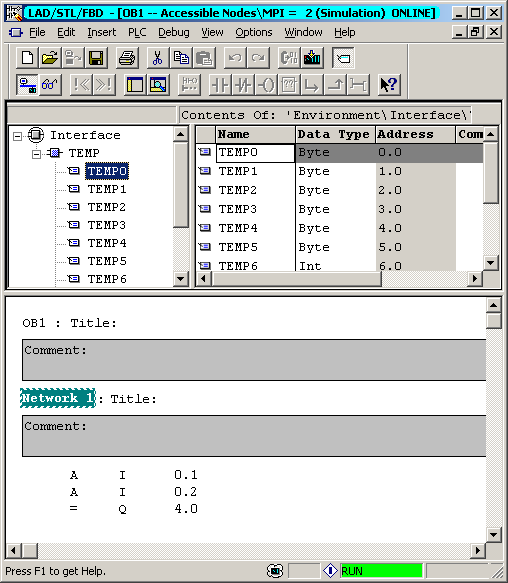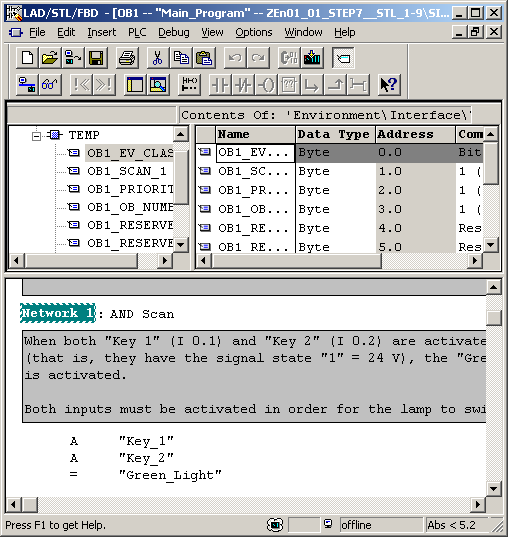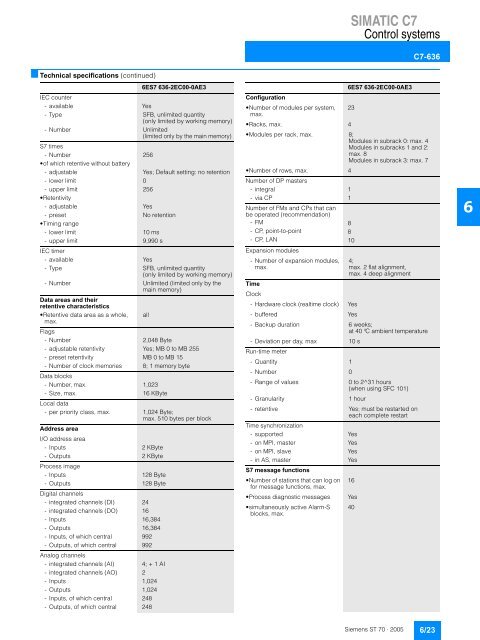

This constraint can create problems for the clients of the Image class. Exposing these methods creates a constraint on using these four methods specifically, the methods corresponding to these four steps-load, process, validate, and show-must be called in that specific sequence for the image object to be valid.

The operation to display an image completes in four steps that must be executed in a specific sequence, and the designer has created public methods corresponding to each of these steps: i.e., load(), process(), validate(), and show() in the Image class.
SIEMENS STEP 7 STRUCT EXTRA BYTE SOFTWARE
Suggested refactoring for Example 2Ĭonsider the case of a software system in which a class implements operations on an image object. This kind of logical structured reasoning in practice will allow you to come up with a better and more effective design. Why would they be interested in getListEntries() method? If the end goal was to traverse the list and access each entry, then a better refactoring solution would be to return an Iterator instead. At this point, let us take a step back and think about the clients of the TodoList class. Therefore, consider returning a deep copy or a read-only copy of the internal list to the clients. However, it is also important to ensure that the clients of the ToDoList are not provided a handle to directly change its internal state. Or, a designer could choose to use Collection as the return type, which is quite general and does not reveal anything specific about the implementation. Since List interface is the base type of classes such as ArrayList and LinkedList, one refactoring would be to use List as the return type of getListEntries() method. The suggested refactoring for the ToDoList example is to change the return type of the getListEntries() in such a way that it does not reveal the underlying implementation. Instead, logical coarse-grained methods that make use of the fine-grained methods can be introduced in the public interface.

If low-level fine-grained methods are provided in the public interface, consider making them private to the implementation. Ĭreate an immutable object and return that cloned object (by definition, an immutable object cannot be changed).

Perform deep copy and return that cloned object (changes to the cloned object do not affect the original object). There are a few ways to solve the problem: It is also not proper to return a handle to internal data structures to the clients of a class, since the clients can directly change the internal state by making changes through the handle.
SIEMENS STEP 7 STRUCT EXTRA BYTE CODE
It is often stated that post-release fixes are in the order of hundreds of times more expensive to fix compared to correcting the issue in code and requirements reviews. Access to code is also effective in increasing the capabilities of the traditional black box test (commonly called a grey box test when code is available to conduct the test using black box test methods).Ĭorrecting a software problem after the event is far more expensive than stopping it before it goes into production release. In cases of packaged software and many third-party products, access to code is restricted. Unfortunately, access to code is not always available. The most effective means of testing software comes from a combination of methods deployed together. Lexical code analysis Testing in Combination White box testing includes tests to ensure predefined criteria have been met. At the extreme (crystal box tests), the tester has access to all code, algorithms, and design notes. This type of testing includes access to internal data structures.


 0 kommentar(er)
0 kommentar(er)
